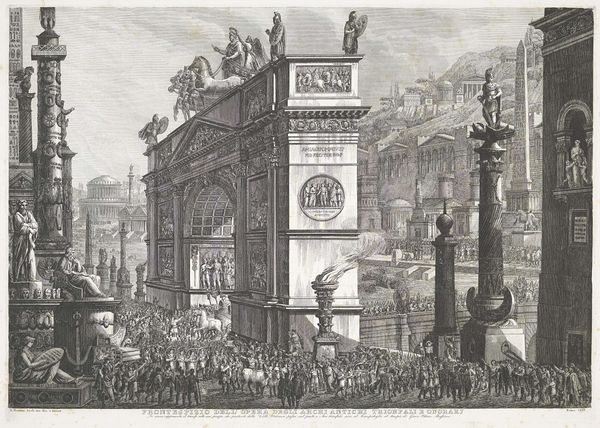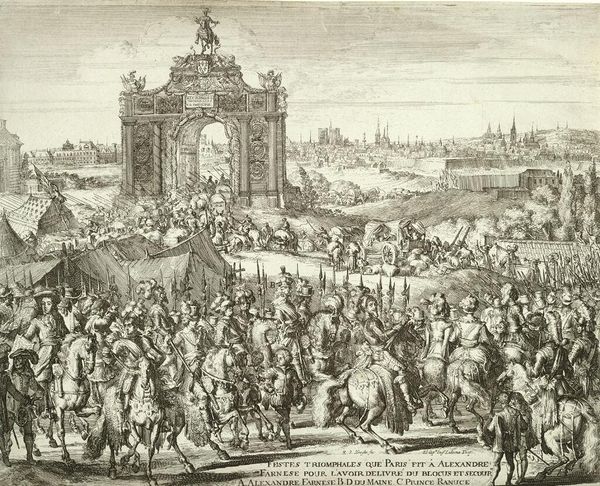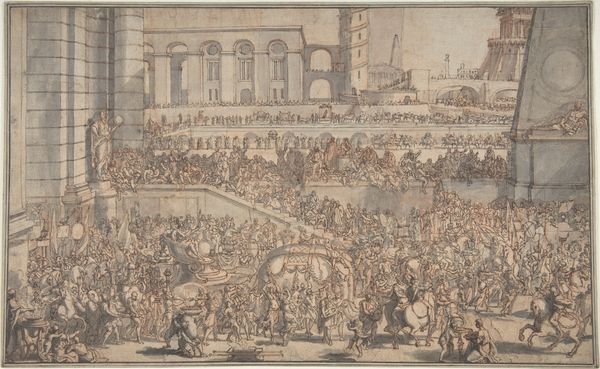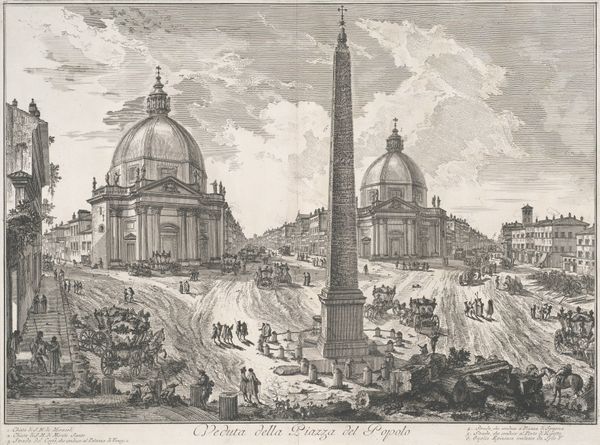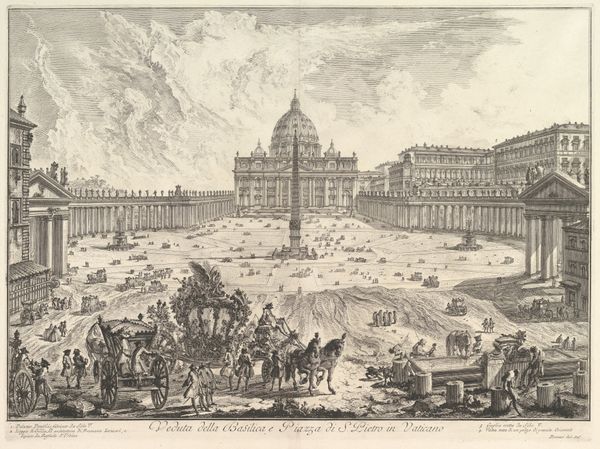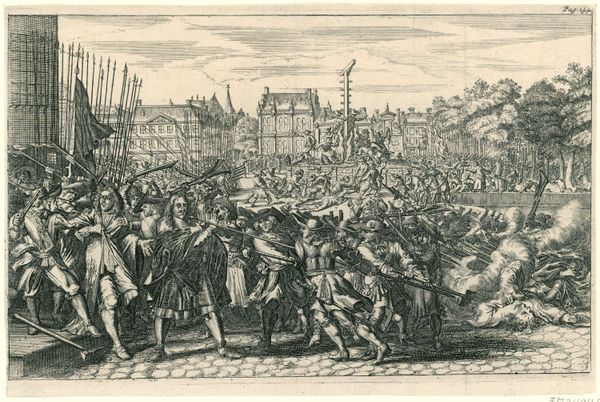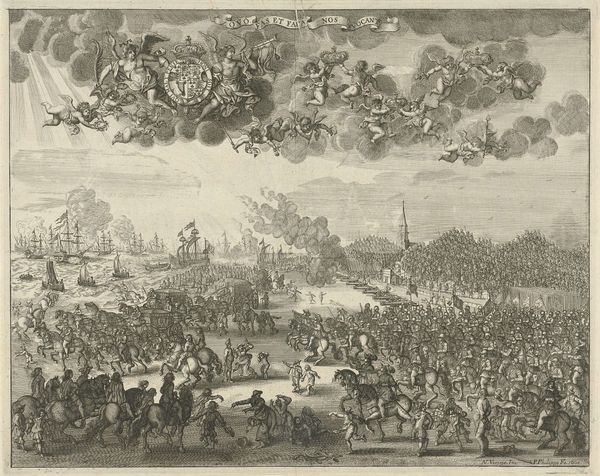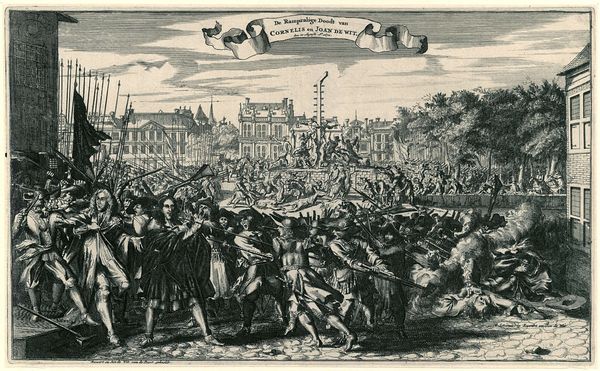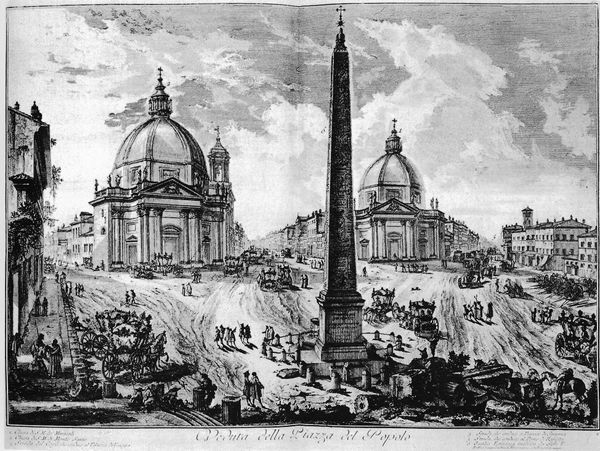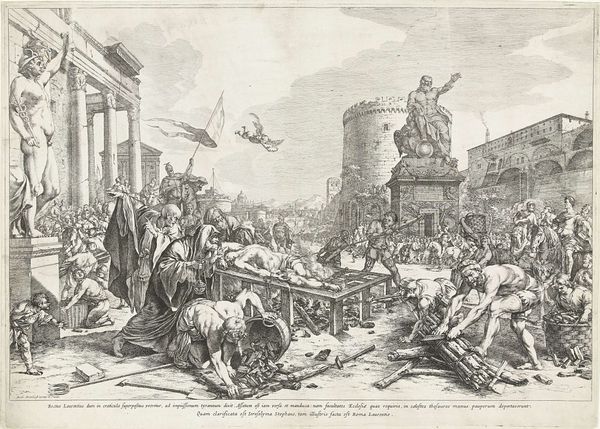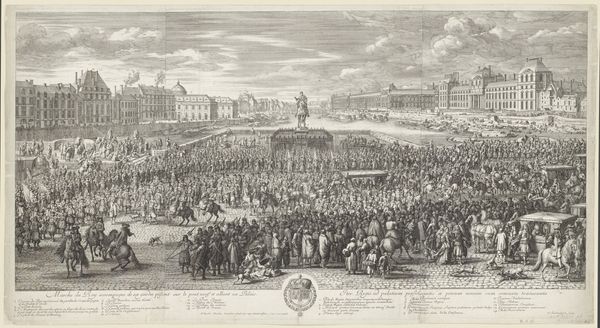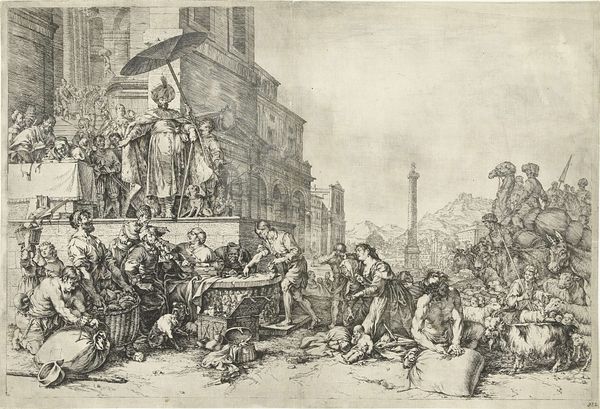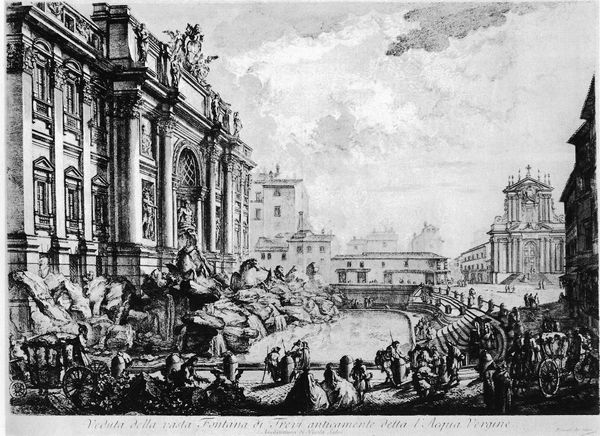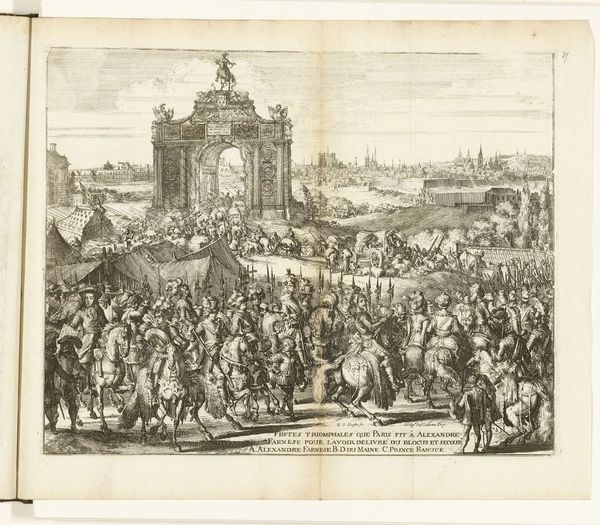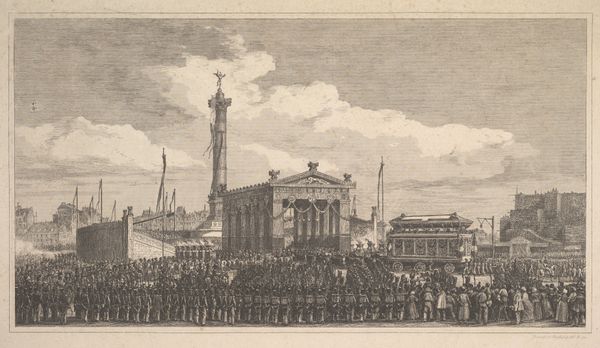
Entry into Rome of Jerzy Ossolinski, Emissary of Wladyslaw IV of Poland with Pope Urban VIII 1778
0:00
0:00
Dimensions: 169 x 273 cm
Copyright: Public domain
Curator: Here we see Bernardo Bellotto's expansive oil on canvas, "Entry into Rome of Jerzy Ossolinski, Emissary of Wladyslaw IV of Poland with Pope Urban VIII," completed in 1778. Editor: Whoa, total visual overload! It’s like looking at a Where’s Waldo book, but instead of Waldo, it’s an emissary. All that bustling activity captured on canvas almost vibrates with energy. Curator: Indeed. Note how Bellotto meticulously constructs space, dividing the composition into clear planes. Observe the imposing architecture: the symmetrical churches and the obelisk, all contributing to a rational, ordered cityscape, typical of academic art. Editor: True, it’s organized chaos, or at least aspires to be. But what fascinates me is how the teeming crowd becomes almost abstract, dissolving into patterns of light and shadow. A million tiny dramas playing out—who are all these folks anyway? What’s the buzz? Curator: This historical genre painting depicts a grand entrance, highlighting the meeting of Polish and Papal powers. It uses the conventions of Baroque spectacle, the carefully planned choreography of power. The artist's intention here is documentation and celebration of the status quo, reflected in his precise representation. Editor: But even within the confines of celebration and historical record, Bellotto finds a way to animate the scene. The dust, the gestures—it’s like he caught Rome in a snapshot. It's grand, sure, but I wonder if anyone involved understood what this meeting really meant long term, looking through our lens today. What were the long shadows that they cast that he was unable to see? Curator: I'd agree that perhaps time does offer perspective shifts, although considering that the painter captured, in paint form, a real historic encounter within the framework of a specific political vision in the later 18th century in Rome— it represents its historical encounter without much ambiguity, wouldn't you say? Editor: Oh, absolutely. Even within a clear display of power, that energy makes me consider things about history besides merely kings and emissaries and think about the folks actually watching the events! Thanks to Bellotto we all become observers across time. Curator: It's interesting how you mention the role of an "observer." That has become an element of intrigue that can not be divorced from this Baroque cityscape. Editor: Indeed, from dust motes to power plays, there's so much here to consider. Thanks for offering this insight into this important encounter.
Comments
No comments
Be the first to comment and join the conversation on the ultimate creative platform.
